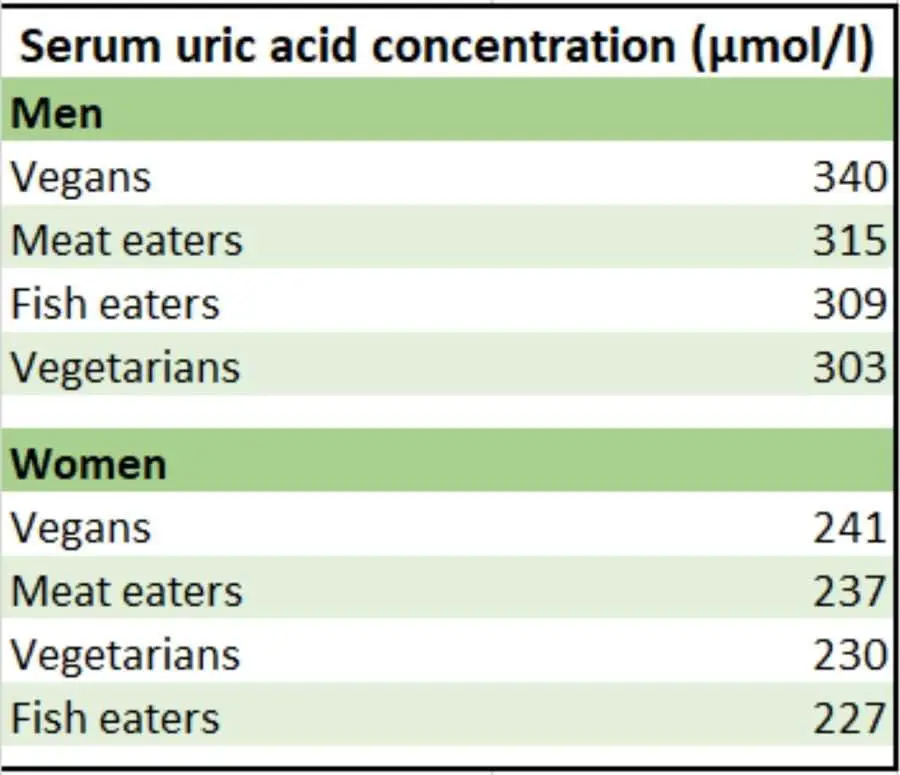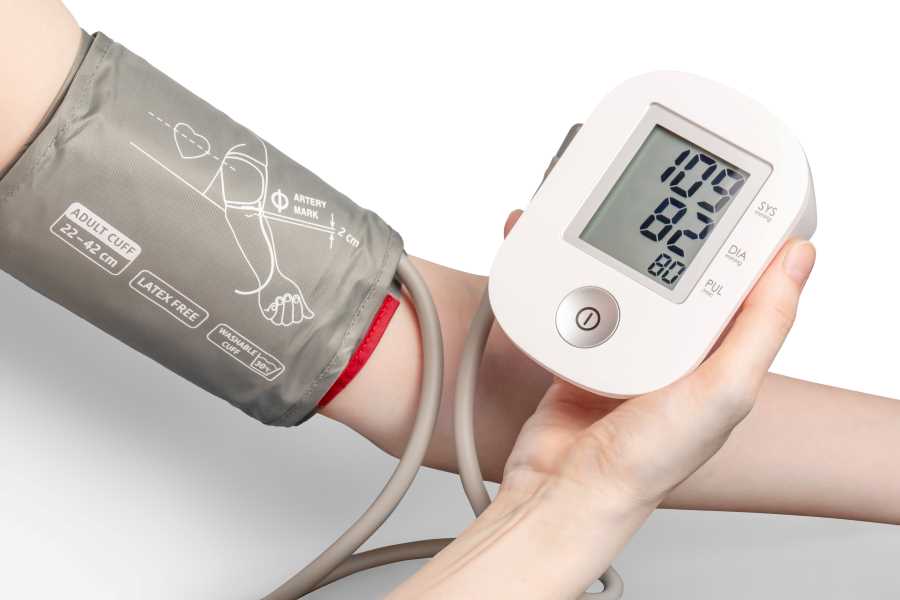Gout is an old but increasingly prevalent disease. Current gout treatments include medications to treat gout attacks and prevent gout complications and recommendations on dietary and lifestyle changes.
In this in-depth post, we will first look at what gout is, its symptoms and underlying causes, and current treatment options. We will then look at whether the controversial carnivore diet can help treat gout by eliminating the principal causes of gout in the first place. We will also look at the available evidence on the carnivore diet’s potential to fix gout.
Content
- What is gout?
- What are the symptoms of gout?
- What causes gout?
- What are current gout treatments?
- Does the carnivore diet cause gout?
- Can the carnivore diet help treat gout?
- Evidence on the carnivore diet’s potential to help gout sufferers
- Conclusion
What is gout?
Gout is a form of inflammatory arthritis characterized by acute intermittent episodes of joint swelling and pain.[1]
Gout happens when excess urate in the body crystallizes as monosodium urate in joint fluid, cartilage, bones, tendons, bursas, or other sites.[2]
Typical gout attacks during the first few years last 7 to 14 days before resolving. In some patients, gout attacks can become frequent and severe and progress to a chronic inflammatory condition. In some cases, deposits of urate crystals grow into larger collections called gout tophi.[3]
Gout is an old disease that has appeared in medical records since ancient times. It once was considered a disease of the upper class who could afford a rich diet. However, gout has become increasingly prevalent especially in developed countries.[4, 5]
The general prevalence of gout is 1–4% of the general population. In Western countries, it occurs in 3–6% in men and 1–2% in women. In some countries, the prevalence may increase up to 10%.[6]
In the US, it is estimated that there are about 8 million gout patients and 32 million individuals with hyperuricemia, an elevated uric acid level in the blood, which can later develop into gout. [7, 8]
What are the symptoms of gout?
Gout attacks or flares often begin at night or early morning, start suddenly, and can last for days or weeks followed by periods of remission.[9]
An initial gout attack often only affects one joint and is mostly found in the big toe. Other joints like ankle joints, knees, elbows, wrists, and knuckles are also commonly affected.[10]
Gout symptoms include pain, joint swelling, redness, heat, and pressure sensitivity.[11]
If gout is chronic, gout attacks will be frequent, symptoms will be present most of the time, and the joints may become permanently stiff, damaged, or disfigured.[12]
What causes gout?
In this section, we will look at the causes of gout in detail because without a good understanding of the underlying causes, we will not be able to find an effective solution.
High serum uric acid is the main driver of the development of gout
As mentioned above, gout is caused by excessive uric acid in the bloodstream which leads to the formation of urate crystals deposited in the joints and surrounding tissues. Uric acid can crystallize when its concentration in the blood rises above 6.8 mg/dl. [13, 14]
Gout is mainly caused by under excretion rather than overproduction of uric acid
Uric acid is a waste product of purines, which are components of nucleic acid, an important building block in cells of all plants and animals.[15]
As purines are found in your body’s tissues and many foods, there are two sources of uric acid: your body’s own production and dietary intake.
Endogenous production of uric acid accounts for about 60% and the rest comes from your diet. A purine-rich diet is responsible for increasing only 1 to 2 mg/dL of uric acid.[16]
Your body gets rid of two-thirds of uric acid through the kidneys and the rest through the gastrointestinal tract.[17]
Serum uric acid level in the body is determined by the balance between uric acid production and uric acid excretion. The build-up of excessive uric acid, which is a direct cause of gout, could be due to either the overproduction of uric acid or your body’s inability to get rid of enough uric acid.[18]
Research has shown that 90% of the cases of gout are due to people having problems excreting uric acid and only 10% of cases are due to overproduction of uric acid.[19]
As this is the case, we will have a good look at the reasons why some people have problems eliminating uric acid. But first, in the section below we will look at whether animal-based food contributes to the urate overproduction problem or not.
1. Meat and seafood
As mentioned above, a purine-rich diet only contributes to an increase in uric acid of 1 to 2 mg/dL. The rest of the uric acid, about 60%, comes from your own body.
However, as meat, organ meat, fish and seafood have a higher level of purines compared to some plant foods, they continue to be blamed for gout attacks.
Let’s have a look at the evidence to see whether animal-based food actually increases a serum uric acid level.
Red meat and seafood intake is positively correlated with gout risk in epidemiological studies
Some epidemiological studies have found that animal-based food like meat and seafood is associated with an increased risk of gout. For example, in a meta-analysis of all studies up to 2017 on dietary factors and risk of gout and hyperuricemia (an elevated uric acid level in the blood), it is found that:
“The risk of hyperuricemia and gout is positively correlated with the intake of red meat, seafoods, alcohol or fructose, and negatively with dairy products or soy foods. High-purine vegetables showed no association with hyperuricemia, but negative association with gout”
Li et al (2018)[20]
However, remember that these findings are based on observational studies which are observational in nature and not interventional or scientific. They can’t prove causation and can only show an association.
However, it is entirely possible that for someone with an existing underlying urate elimination problem, an increase in intake of purine-rich foods can exacerbate gout attacks.
Vegans had the highest serum uric acid in a cross-sectional study
However, a cross-sectional study by Schmidt, et al (2013)[21] involving nearly 1,700 participants found a result that is somewhat contradictory to epidemiological findings.
Participants in this study were classified as meat eaters, fish eaters (do not eat meat but do eat fish), vegetarians (do not eat meat or fish), and vegans (do not eat meat, fish, dairy products, or eggs).
As can be seen in the table below, the study found that vegans actually had the highest serum concentrations of uric acid compared to meat-eaters, fish-eaters, and vegetarians, especially in men.
Based on this study’s finding, animal-based food doesn’t seem to have a positive impact on serum uric acid.

Atkins diet reduced serum uric acid after six months
In a study by Lu et al (2014),[22] 74 overweight or obese participants followed the Atkins diet, i.e., high protein, low-carbohydrate, no calorie restriction, for a six-month period.
It was found that the serum uric acid level decreased significantly by 0.8 mg/dL despite substantial purine loading. The participants experienced other benefits including significant improvements in HDL-cholesterol, total cholesterol/HDL-C ratio, triglyceride levels, and fasting insulin levels.
Moderate calorie and carbohydrate restriction and increased intake of protein reduced the risk of gout
In a small study by Dessein et al (2000),[23] 13 overweight men with gout were put on an intervention diet of 1,600 calories, made up of 40% carbohydrate, 30% protein, and 30% fat. The level of carbohydrates was lower than what these men usually consumed while the level of protein and fat intake was proportionally higher than what they usually consumed.
After 16 weeks on this diet, the men lost weight, had a lower serum uric acid level, lowered cholesterol, and experienced a decrease of gout attack frequency from 2.1 per month to 0.6 per month.
Summary
Diet makes a small contribution to uric acid production. Overall, available evidence indicates that perhaps a protein-rich diet is not a contributing or a significant factor to the risk of developing gout.
If meat causes gout then our ancestors would have been crippled by pain, unable to hunt, scavenge, gather, and wouldn’t have been able to survive. The fact that they not only survived but thrived on this diet tells us otherwise.
2. Hyperinsulinemia
Gout is found related to hyperinsulinemia, a condition where the insulin level in your blood is higher than what’s considered normal.
Insulin is a hormone secreted by the pancreas to allow glucose to enter the body’s cells and to store excess glucose for later use. If your cells for some reason stop responding properly to insulin, they are unable to use blood sugar for energy causing a high blood sugar level. Sensing this, the pancreas secretes more insulin to maintain a normal blood sugar level. This eventually leads to an abnormally high level of insulin or hyperinsulinemia.
Hyperinsulinemia and its underlying insulin resistance cause many health issues and one of them is kidney damage. An abnormally high insulin level affects kidney function and they become less efficient at excreting uric acid. Under excretion means higher uric acid retention and this potentially leads to the development of gout. [24, 25, 26, 27]
3. Fructose and sugary drinks
Fructose and sugary drinks have been found associated with hyperuricemia and gout.[28, 29]
For example, in the US, the substantial increase in soft drink and fructose consumption coincided with the increase in serum uric acid and the doubling of gout incidents in the last few decades.[30]
The impact of fructose on gout risk is twofold. On the one hand, fructose causes an increase in uric acid production. On the other hand, fructose is a simple sugar and can increase the risk of insulin resistance and hyperinsulinemia. As discussed above, this affects kidney function and has a negative impact on uric acid excretion.[31]
4. Alcohol
Alcohol consumption increases the risk of developing gout and the frequency of gout attacks. Alcohol promotes the production of uric acid and has a diuretic effect but at the same time causes the kidneys to release less uric acid. [32, 33]
5. Being overweight or obese
Being overweight or obese is associated with an increased risk of gout. Gaining weight over adulthood is also found associated with an increased risk of gout. [34, 35]
In a survey of nearly 30,000 people in the US during 1988–1994 and 2007–2010 periods, it was found that the prevalence of gout was 1–2% among participants with a normal BMI, 3% among overweight participants, 4–5% with class I obesity, and 5–7% with class II or class III obesity.[36]
6. Other contributing factors to the development of gout
In addition to factors directly affecting uric acid balance, there are a number of other contributing factors which are discussed briefly below.
(i) Genetic factors
Hyperuricemia or an elevated uric acid level in the blood is the main pathogenic factor in urate crystal deposition and the development of gout. However, only 5% of people with hyperuricemia above 9 mg/dL actually develop gout. Accordingly, genetics are thought to have played an important role in causing gout.[37, 38]
(ii) Family history of gout
Research has found that gout aggregates within families. Your risk of developing gout is higher if other members of your family have this condition.
In a nationwide cross-sectional study using the entire Taiwan population of 23 million people, it is found that if you have a first-degree relative with gout, your risk of developing gout is almost double that of the general population. If you have a parent or offspring with gout, your own risk is also almost double. If you have an affected twin, your own risk increases 8 times.[39]
(iii) Age and gender
Serum urate acid in children is low but begins to rise after puberty to reach its normal level. Gout is very rare in children and young adults and generally only happens in cases of inborn errors of purine metabolism.[40]
Urate acid levels in men are generally higher than in women and gout is 5 times more common in men than in women. They also develop it at a younger age than women do. Gout mostly occurs in men over 40 years old and in women after menopause.[41, 42]
(iv) Medication
Medications including diuretics (both thiazide and loop diuretics), acetylsalicylic acid (Aspirin), special drugs taken after an organ transplant, Levodopa used in treating Parkinson’s disease, and cancer medications can increase the risk of gout.[43, 44]
What are the current gout treatments?
Current gout treatments include medications to manage gout pain and lower uric acid levels and recommendations to modify lifestyle.[45, 46, 47, 48]
Medications to reduce gout pain and inflammation include:
- Non-steroidal anti-inflammatory medications (ibuprofen, indometacine or naproxen) to reduce pain and swelling
- Colchicine to relieve gout pain, usually used as an oral formulation in low dose due to side effects
- Corticosteroid injections or tablets for acute gout when nonsteroidal anti-inflammatory drugs are contraindicated.
Medications to lower levels of uric acid such as:
- Febuxostat
- Allopurinol
- Probenecid.
Standard recommendations for changes in lifestyle for ongoing management of gout such as:
- Lose weight gradually and aim to maintain a healthy body weight
- Drink alcohol in moderation and avoid binge drinking
- Drink plenty of water, and staying hydrated
- Avoid sugary drinks
- Avoid or eat in moderation purine-rich foods such as organ meat, red meat, and seafood
- Exercise regularly.
Does the carnivore diet cause gout?
The carnivore diet does not cause gout because, as discussed above, gout is mostly due to the under excretion of uric acid rather than overproduction of uric acid.
Further, uric acid created from dietary sources accounts for only a small percentage of total uric acid. Two-thirds of uric acid is endogenously produced by your own body.
Available evidence also does not show that purine-rich diets cause an increase in serum uric acid level and increase the risk of gout.
There is no report of a high prevalence of gout in groups following a high meat diet such as the Inuit, the Maasai, or the Gauchos.
From an evolutionary perspective, it is extremely unlikely that an animal-based diet would cause gout.
Can the carnivore diet help treat gout?
The carnivore diet can help treat gout because it removes many underlying causes of gout including improving insulin sensitivity and eliminating alcohol, fructose, and sugary drinks from the diet. In addition, the carnivore diet can help with natural and healthy weight loss which in turn reduces the risk of gout.
Improving insulin sensitivity
As discussed above, hyperinsulinemia and insulin resistance cause kidney damage and have a negative impact on uric acid excretion. This, consequently, can lead to gout.
The carnivore diet can help improve insulin sensitivity because it removes the main causes of insulin resistance including carbohydrate overconsumption and inflammatory sources such as oxidized omega-6 fatty acids and plant toxins.
When you consume foods containing carbohydrates, your body turns carbohydrates into glucose which then enters the bloodstream. When blood sugar levels rise, insulin is released to transport glucose into your cells to be used for energy or stored as fat if there is excess energy coming in.
If you consistently consume carbohydrates (e.g. cereals, bread, pasta, sugary drinks, and other highly processed foods) that cause blood sugar spikes over time, your cells will stop responding to insulin properly, i.e. they have become insulin resistant. This can cause a whole host of issues like inflammation, hormone disruption, and other chronic conditions.
In contrast, when you are on the carnivore diet, there is a very little amount of carbohydrates. Accordingly, there won’t be regular blood glucose spikes and you will eliminate the root cause of insulin resistance and hyperinsulinemia.
You also consume no industrial seed oils which are high in oxidized omega-6 fatty acids which are known to be inflammatory and increase the risk of insulin resistance.[49, 50]
In addition, you also remove all plant toxins, especially oxalates. When oxalates are bound with calcium and minerals, they form crystals that can deposit in bones, joints, and other tissues causing pain and kidney stones.
Removing alcohol, fructose, and sugary drinks
On the carnivore diet, alcohol, fructose, and sugary drinks as well as fruits which are a source of fructose are eliminated. Hence, these major gout risk factors are removed.
With regard to alcohol, even if you are not susceptible to gout attacks, you should not drink alcohol on the carnivore diet or on any other diet for that matter because of its many serious health risks which I have written in detail in this post.
Supporting healthy weight loss
As mentioned above, being overweight or obese is associated with an increased risk of gout. The higher your BMI, the more likely it is that you will develop gout.
Fortunately, the carnivore diet is a great diet for natural and healthy weight loss. This is because:
- It’s hard to overeat meat which is what your body is designed to eat
- Carnivore diet food has a high satiety level which results in lower calorie intake overall
- Carnivore diet food is high in proteins which support muscle synthesis and boost metabolism
- Carnivore diet food is low in carbohydrates which inhibit fat storage and encourage fat burning
- The carnivore diet can improve mental health and further support weight loss.
There’s not much you can do about other risk factors of gout such as genetics, family history, age, and gender but diet and metabolic health are definitely within your control and these are what you need to focus on to treat gout.
Evidence on the carnivore diet’s potential to help gout sufferers
There is no controlled study on the impact of the carnivore diet on gout risk and gout incidents that I can find.
However, there is a lot of anecdotal evidence regarding the carnivore diet’s ability to fix gout which nutritionists and doctors often dismiss.
Although they are just anecdotal evidence, in my opinion, if there are too many cases, it is difficult to summarily dismiss them all and say that they are all just coincidences.
I provide a few examples of anecdotal evidence below.[51, 52, 53]
Gout resolved on the carnivore diet
I had a few years of regular gout attacks. With a bit of self-experimentation, I seen that it’s a result of sugar build up. Anyone that gets it after eating meat is already on the edge of a gout attack anyway. Moved to keto and carnivore and dumped the sugar and never had an attack since. It works, try it. Remember no sugar, sweets or quick carbs and there will be no gout attacks.
Got gout 37 days ago and 6 days in to that I started carnivore strict. I’m finally walking around with almost no pain, carnivore diet worked for me.
I used to have gout regularly before I started a carnivore diet. Since I started eating like a carnivore, no more gout.
I started with the Keto diet that helped me initiate the carnivore diet. After being on the carnivore diet my gout left.
I have been pain free for nearly 2 years and can not suggest the carnivore diet enough. And drink a LOT of water and move around more once your pain subsides.
Used to get gout pain in one big toe if I drank red wine or beer; on keto-carnivore get no gout or arthritic pain.
Two years of constant agony of gout in my tendons. Gave up everything other than animal based and been gout free for almost three years, but if you want gout I advise eating lots of sugar and really going full bore on beer!
I’ve started carnivore for 2 weeks and have done everything my doctor told me not to do. Glad I didn’t take her advice. No gout flare ups either.
I’ve not had even a trace of gout since I started on Keto and losing 50lb and all my INFLAMMATION and being mostly carnivore now.
Twenty plus years of the typical high carb endurance bike racer diet left me suffering from gout also. Gout flare ups hurt worse than breaking a bone. Went to full carnivore last June after the worst flareup yet. I haven’t had a single flareup since.
I had so many gout attacks before when my insulin was high; I’m a carnivore and never seen the gout again.
I had extreme gout twice this year so intense i was bed ridden for 2 months. Carnivore diet cured my gout. I no longer have gout. When i had gout i was eating whatever i wanted and junk food. Lots of suga, soda and a lot of meat. 40 days ago after having gout for a month i started carnivore and gout started going away and within a few days it was gone. Before i had tried cherry juice, apple cider vinegar, vitamin c none of which works. Gout is your body saying no more poison. Sugar, carbs for me caused gout. Im having the best health i have had in a long time and all i eat is meat, water alittle salt and cheese.
On allopurinol for 20 years plus, carnivore diet 8 month no gout no meds amongst other hard core health benefits of course.
I suffered from gout for 3 months this past summer on a SAD diet. I switched to a carnivore diet and haven’t had any gout issues since AND have gotten off of the allopurinol.
Had gout for last 25 years… hundreds of flares. Been bed ridden many times. Started keto/carnivore, (80% carni) in October 2018. Lost 70 lbs and the last year has been the most pain free in 25 years. I can run now. I still have slight pain from decades of joint damage, but nothing compared to flares. This journey had been life changing…I’ll never go back…
Gout flares on the carnivore diet
I have also found the following testimonials where people said that they had gout flares after starting the carnivore diet:
I’m on carnivore 4/5 weeks and I have gout! Sooo painful!
So what do you recommend for someone who has never had gout their entire life until they do carnivore?
I started the carnivore diet and got gout.
Started keto and about 5 or 6 days in, started getting a gout attack. No alcohol or fructose. I guess I have insulin resistance, but what can I do during an attack while staying keto/carnivore?
I started eating a carnivorous diet three weeks ago and developed my first gout attack ever 5 days ago
I’ve had gout attacks since I was 23 and I’m now 31. I get an attack almost every week lasting 2-3 days. Third day on carnivore diet and I’m starting to get a flare up in my big toe right now.
I’m over 60 days Carnivore and woke up with my knees and knuckles swollen with pain in my ankle, toes and wrist.
I did a blood test after 2 months of 100% carnivore, my uric acid is through the roof. How does this theory explain that?
My uric acid is steadily rising on 100% nose to tail carnivore diet (currently 8.1). No carbs, no fructose, no alcohol.
According to Dr. Eric Berg and Dr. Shawn Baker, for a minority of people, going on a high protein diet or the carnivore diet may precipitate a gout attack. This is because their body is not yet able to resolve underlying issues and improve on uric acid elimination. The sudden increase in high-purine food intake causes an increase in uric acid production and, therefore, result in gout attacks.
However, it will resolve with time as you get the inflammation under control and heal insulin resistance. A temporary solution to manage the onset of gout flares is to use medications to lower uric acid levels or to alkalize the body with potassium citrate to inhibit the formation of uric acid.
Conclusion
Science hasn’t got the whole picture of gout yet.
If you currently have a gout condition that you have to rely on medications to manage symptoms and changes in lifestyle so far haven’t improved it, maybe try out the carnivore diet and see if it helps.
As mentioned above, at the adaptation phase, you might experience temporary gout flares that will go away when your metabolism improves and catches up.
And if you do like to try out the carnivore diet to see if you can fix gout with it, please check out this detailed guide on how to start the carnivore diet that I’ve written for people who are new to this diet.
Disclaimer: The information in this post is for reference purposes only and not intended to constitute or replace professional medical advice. Please consult a qualified medical professional before making any changes to your diet or lifestyle.





